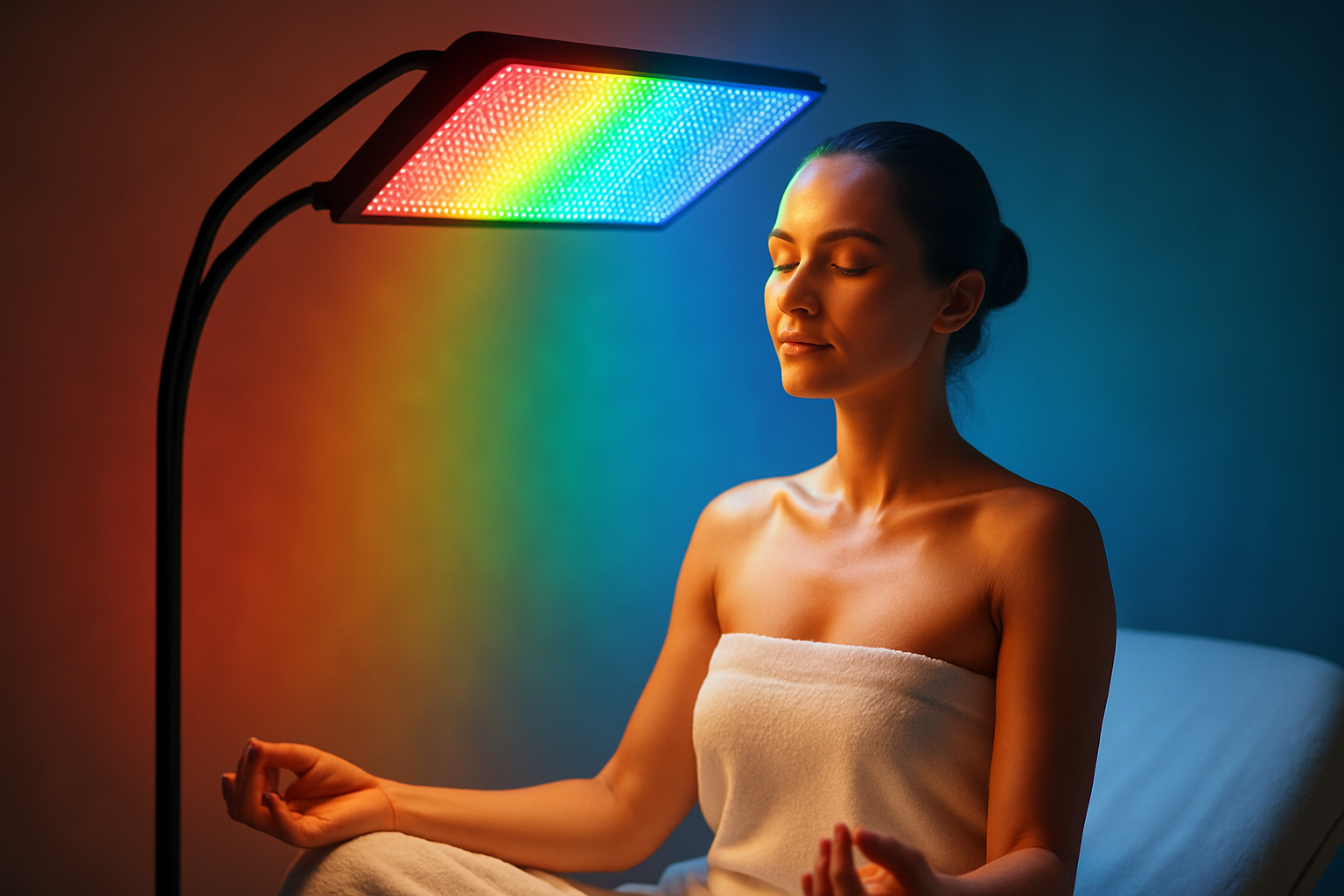Chromotherapy: The Spectrum of Wellness
In the ever-evolving world of beauty and fitness, a vibrant approach to well-being is emerging, painting the landscape of wellness with a colorful brush. Chromotherapy, also known as color therapy, is gaining traction as a holistic method for enhancing both physical and mental health. This ancient practice, rooted in the belief that different colors can influence our bodies and minds, is now being reimagined for modern wellness routines. As more people seek natural, non-invasive ways to improve their health and appearance, chromotherapy offers a unique blend of tradition and innovation. From specialized light treatments in spas to color-coordinated workout spaces, this technicolor trend is spreading across various sectors of the beauty and fitness industry, promising a spectrum of benefits for those willing to explore its rainbow of possibilities.

During the Middle Ages, the use of stained glass in European cathedrals was not merely decorative; it was believed that light filtering through colored glass had healing effects on worshippers. The modern revival of chromotherapy can be traced back to the 19th century when scientists began studying the effects of color on human physiology and psychology.
The Science Behind Color’s Impact
Recent scientific studies have begun to shed light on the physiological effects of color exposure. Research has shown that different wavelengths of light can influence the production of hormones and neurotransmitters in the body. For example, exposure to blue light has been found to suppress melatonin production, affecting sleep patterns, while red light has been observed to stimulate the production of collagen in skin cells.
Neurologists have also discovered that color perception activates specific areas of the brain, influencing mood and cognitive function. This understanding has led to the development of color-based therapies for conditions such as seasonal affective disorder (SAD) and certain forms of depression.
Chromotherapy in Modern Beauty Treatments
The beauty industry has embraced chromotherapy with open arms, incorporating color-based treatments into a wide range of services. LED light therapy facials have become increasingly popular, with different colors targeting specific skin concerns. Red light is used for anti-aging treatments, stimulating collagen production and reducing the appearance of fine lines. Blue light is employed to combat acne-causing bacteria, while green light is believed to help with hyperpigmentation and uneven skin tone.
Some spas now offer full-body chromotherapy sessions, where clients lie in rooms bathed in colored light. These treatments are designed to promote relaxation, reduce stress, and address various skin and body concerns. The integration of chromotherapy into traditional spa services has opened up new avenues for personalized wellness experiences.
Fitness Spaces Awash in Color
The fitness industry is also tapping into the potential of chromotherapy. Innovative gyms and studios are designing workout spaces with color-changing LED systems that can be adjusted to enhance different types of exercise. For example, energizing reds and oranges might be used during high-intensity interval training to boost energy and motivation, while calming blues and greens could be employed during yoga or meditation sessions to promote relaxation and focus.
Some fitness centers are taking this concept further by creating immersive, multi-sensory workout experiences that combine chromotherapy with sound and scent. These environments aim to engage all the senses, making exercise more enjoyable and potentially more effective by influencing the mind-body connection.
Chromotherapy-Inspired Beauty and Wellness Products
The influence of chromotherapy extends beyond treatment rooms and gyms, inspiring a new wave of color-centric beauty and wellness products. Color-correcting skincare products, which use principles of color theory to address skin tone issues, have gained popularity. Green-tinted primers are used to neutralize redness, while purple-hued products combat sallow or yellow undertones.
In the realm of nutritional supplements, companies are marketing “color-coded” vitamins and superfoods, associating different hues with specific health benefits. For instance, purple foods like acai and blueberries are promoted for their antioxidant properties, while green supplements are linked to detoxification and overall wellness.
Even home fitness equipment is getting a chromotherapy makeover, with some manufacturers producing yoga mats and workout gear in colors believed to enhance specific aspects of physical and mental performance.
The Future of Chromotherapy in Wellness
As research into the effects of color on health and well-being continues, the applications of chromotherapy are likely to expand. Wearable technology incorporating color therapy is an emerging trend, with some companies developing light-emitting accessories designed to influence mood and energy levels throughout the day.
In the field of architecture and interior design, there’s growing interest in creating spaces that utilize color psychology to promote health and productivity. This could lead to more holistic approaches in designing homes, offices, and public spaces that support overall well-being.
The integration of chromotherapy with other emerging technologies, such as virtual and augmented reality, opens up exciting possibilities for immersive, personalized wellness experiences. Imagine virtual fitness classes where the environment adapts its color scheme in real-time to optimize your workout performance and mood.
As chromotherapy continues to evolve, it offers a promising avenue for those seeking a more colorful approach to health and beauty. While more research is needed to fully understand and validate its effects, the growing interest in this vibrant therapy suggests that the future of wellness may indeed be bright – and very colorful.





